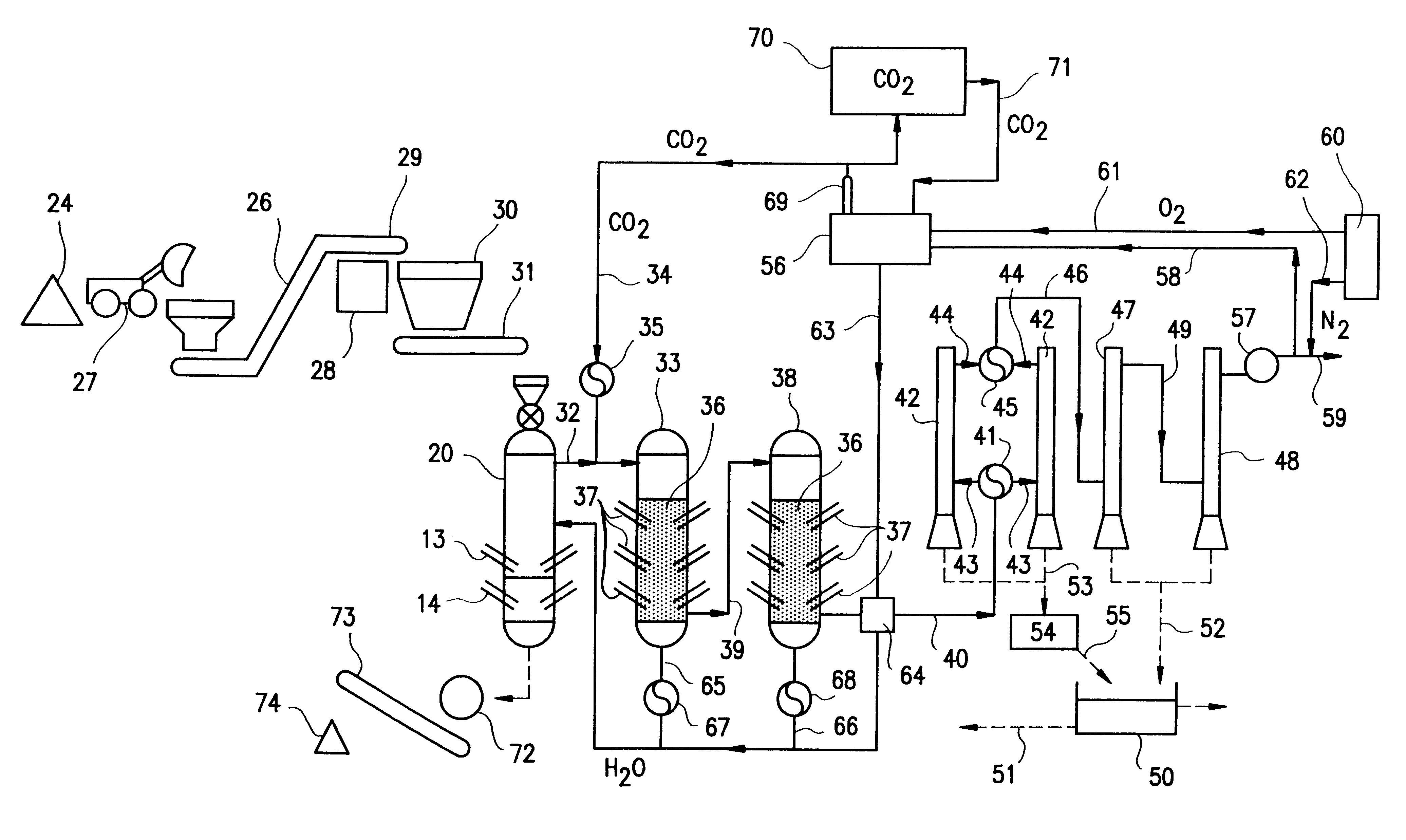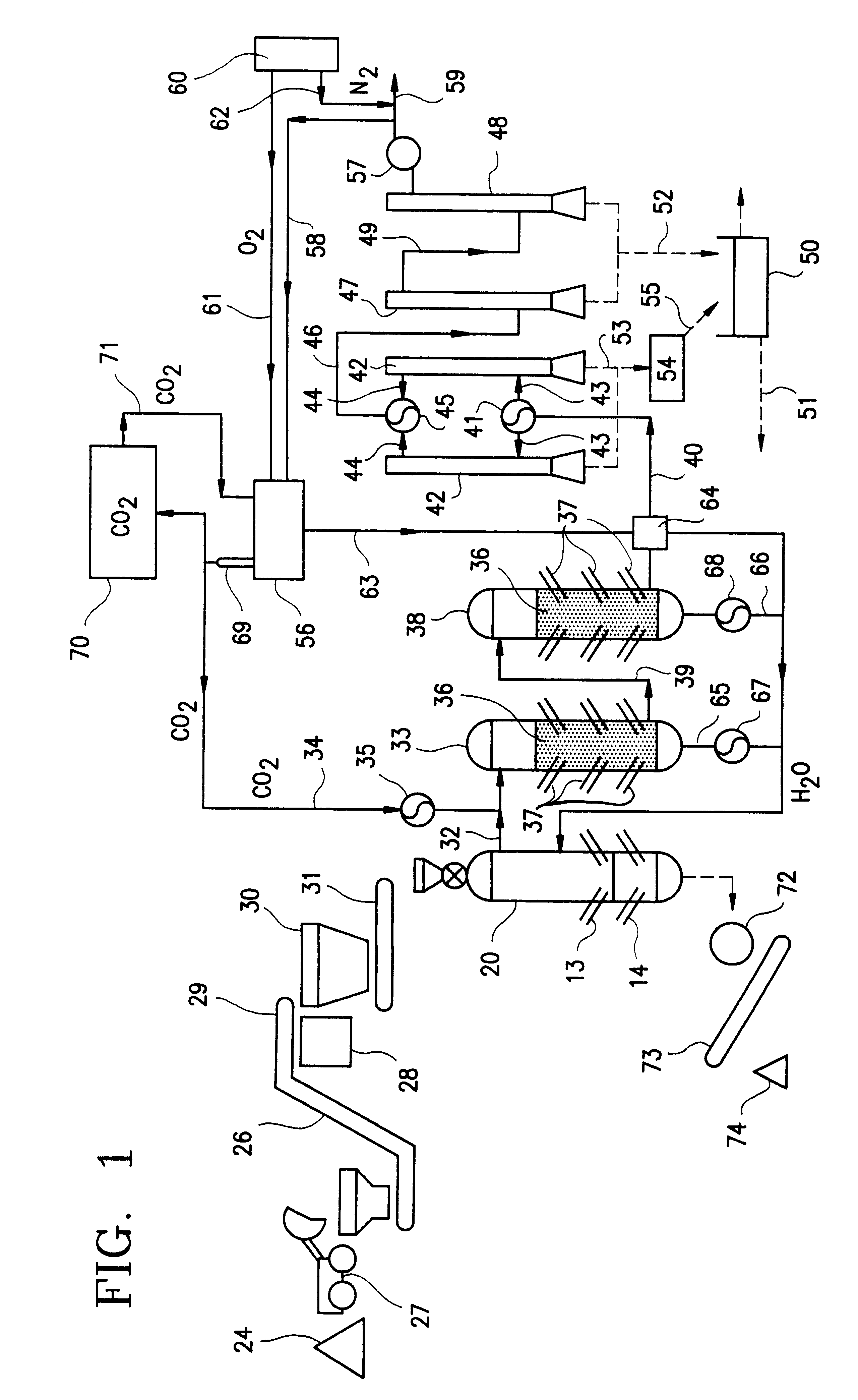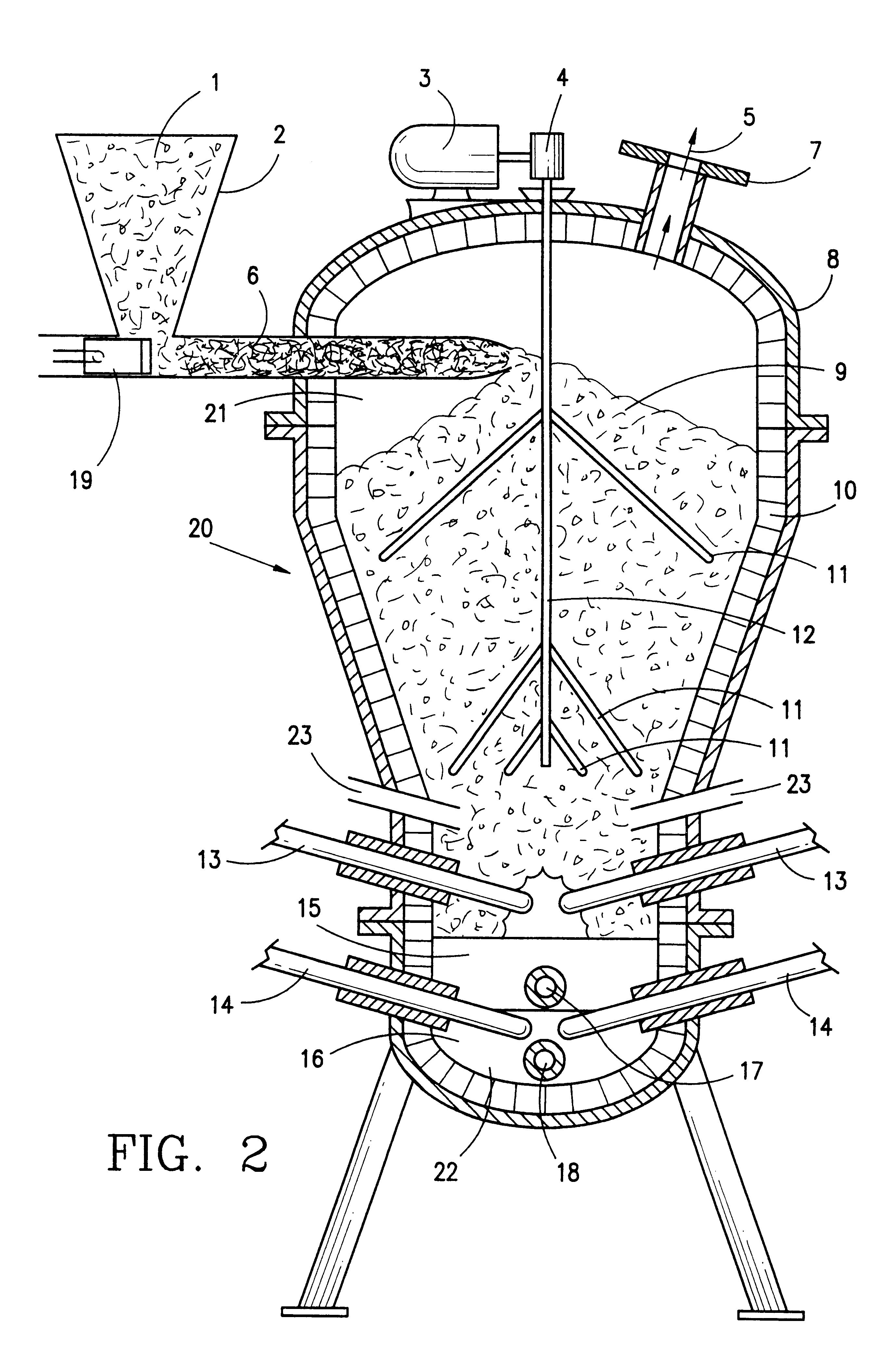Synthesis gas production and power generation with zero emissions
a technology of synthesis gas and power generation, which is applied in the direction of combustible gas production, gasifier electrodes, electrical coke oven heating, etc., can solve the problems of poor synthesis gas quality, high carbon dioxide content, and general unsuitability for direct use of raw product gas produced in primary reactors
- Summary
- Abstract
- Description
- Claims
- Application Information
AI Technical Summary
Benefits of technology
Problems solved by technology
Method used
Image
Examples
Embodiment Construction
In a preferred embodiment illustrated in FIG. 1, carbonaceous material which is to be pyrolytically decomposed is fed into a primary reactor 20. The preferred primary reactor is illustrated in FIG. 2. The reactor shown in FIG. 2 is a modified version of the primary reactor of U.S. Pat. No. 5,069,765. The modifications include replacing the water reservoir in the bottom portion of the reactor with a vitrification zone equipped with electrodes in the lower portion thereof. These electrodes provide heat for melting the ash for vitrification and melting the metal which enters the bottom portion of the reactor. A steam injection system replaces the water containing reservoir so that the reactor includes a source of water which is required for synthesis gas production in the primary reactor.
The preferred primary reactor indicated generally by reference numeral 20 in FIG. 2 includes chamber 21 which is formed by reactor shell 8. Pyrolytic decomposition occurs in chamber 21.
A vitrification ...
PUM
| Property | Measurement | Unit |
|---|---|---|
| mechanical energy | aaaaa | aaaaa |
| heat | aaaaa | aaaaa |
| combustible | aaaaa | aaaaa |
Abstract
Description
Claims
Application Information
 Login to View More
Login to View More - R&D
- Intellectual Property
- Life Sciences
- Materials
- Tech Scout
- Unparalleled Data Quality
- Higher Quality Content
- 60% Fewer Hallucinations
Browse by: Latest US Patents, China's latest patents, Technical Efficacy Thesaurus, Application Domain, Technology Topic, Popular Technical Reports.
© 2025 PatSnap. All rights reserved.Legal|Privacy policy|Modern Slavery Act Transparency Statement|Sitemap|About US| Contact US: help@patsnap.com



